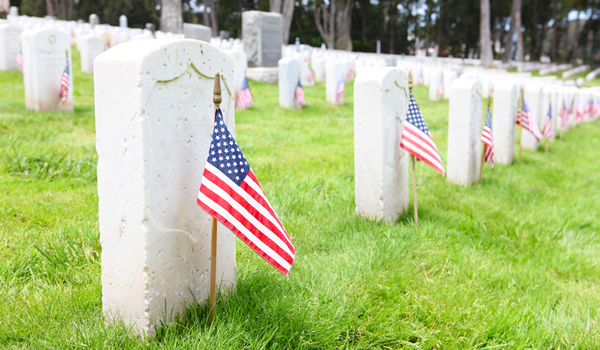What's the Difference Between Memorial Day and Veterans Day?

Both Memorial Day and Veterans Day are federal government holidays that honor American military personnel. However, one honors all past and present American veterans, and the other is set aside to remember specifically those who have died in battle.
Here's the history of each holiday and a breakdown of the differences between them:
Memorial Day
Memorial Day is observed on the last Monday of May, which in 2016 falls on May 30. The day is predominantly for honoring and remembering military personnel who died while in the military service, particularly those who died in combat or as a result of injuries sustained during battle.
Memorial Day was originally celebrated under a different name. After the Civil War ended in 1865, people began dedicating certain days to placing flowers on the graves of Union and Confederate soldiers who had died in the war . In 1868, former Maj. Gen. John A. Logan, the head of an organization of Union veterans, established May 30 as Decoration Day. The holiday's name was formally changed to Memorial Day in 1882.
In 1966, Congress and former President Lyndon Johnson recognized Waterloo, N.Y., as the location where the first official, community-wide Memorial Day ceremony took place on May 5, 1866. After World War I, celebrations on May 30 honored military men and women who died in all American wars, not just the Civil War.
Memorial Day became a federal holiday in 1971, and in addition to placing flowers on the graves of soldiers, many people wear poppies in their honor; the red flowers represent the blood of fallen soldiers. The tradition began with World War I soldier and medical officer John McCrae's 1915 poem "In Flanders Fields," which includes the line "In Flanders fields the poppies blow / Between the crosses, row on row."
On Memorial Day, many veterans' service organizations, including the Veterans of Foreign Wars of the United States and The American Legion, annually distribute millions of red crepe paper poppies that have been assembled by hospitalized veterans. Called "Buddy Poppies," the flowers are handed out in exchange for donations to assist disabled and needy veterans.
Sign up for the Live Science daily newsletter now
Get the world’s most fascinating discoveries delivered straight to your inbox.
Veterans Day
Veterans Day, which is celebrated every November 11, honors all the people that have served or are currently serving in the military. It doesn't matter whether they served during a war or in times of peace, as Veterans Day is for thanking all members of the armed forces for the sacrifices they have made for the United States' security and freedom.
Like Memorial Day, Veterans Day actually began as a holiday under a different name. To celebrate the ending of World War I hostilities on November 11, 1918, Congress signed an act in 1926 declaring that November 11 is Armistice Day.
In the late 1940s, former Congressman Edward H. Rees (R-Kan.) introduced legislation to change the name of Armistice Day to Veterans Day so that the holiday could honor veterans who served the United States during all wars, not just World War I. But it wasn't until 1954 that former President Dwight D. Eisenhower signed a bill renaming Armistice Day Veterans Day.
- When Was the 4th of July First Celebrated?
- What Are the Origins of Famous Patriotic Songs?
- Why Is the Flag at Half-Staff Only Until Noon on Memorial Day?
Follow Remy Melina on Twitter @RemyMelina










